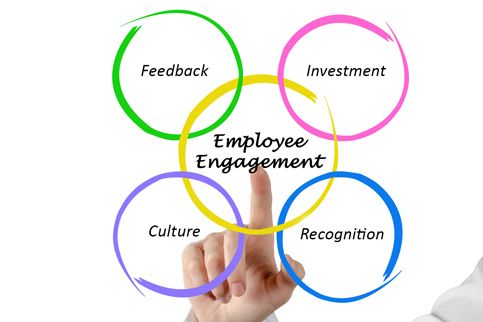Improving Employee Engagement - Executive and Line Management's Roles


In last week’s blog post, Aubrey explained what Employee Engagement was (and what it was not) and why it is important for companies to improve employee engagement.
What is a bit disheartening is that, according to Gallup’s State of the American Workplace report, only 33% of employees are engaged in their jobs. Add to that the fact that employee disengagement costs the US upwards of $550 billion a year in lost productivity! As striking as these statistics are, it is a great opportunity for companies that can improve employee engagement levels to significantly increase their productivity and profitability. So how can companies do that?
Executive Management’s Role
Strong Vision and Mission - Company leaders need to first define and communicate a strong vision and mission for their company. Then they need to hire and develop managers that are fully invested in that mission and help them build strong teams with similar engagement. Leadership training and development coupled with a focused and empowering executive team is a powerful foundation for developing engaged employees at all levels of the organization.
Leadership Coaching - Another great Gallup statistic is that employees who are supervised by highly engaged managers are 59% more likely to be engaged than those supervised by actively disengaged managers. So prioritize leadership coaching and keep managers accountable. Equip managers with the right training to engage their teams effectively.
Make The Most of Onboarding - Start right away with your onboarding program. This is an employee’s first immersion into the culture of the organization. Pair new employees with a mentor who can guide them, help them build relationships within the company and reinforce the company’s vision and mission. Make sure senior management is involved in the process so employees know that they are valued and heard by even the highest levels of management. Finally, make sure that training continues even after the initial onboarding – so that employees are always learning and expanding their skill sets.
Be Transparent – Companies that regularly communicate with their employees and create a transparent work environment foster employee trust. This trust bonds employees with their company. What may seem like over-communication to some, actually builds better overall relationships.
Line Management’s Role
Hire the Right People - At the very start, manager’s need to hire the right people and put them in the right jobs to succeed. As part of the hiring process, manager’s need to prioritize engagement, then train and reinforce working toward the company’s vision and mission.
Communication and Feedback - Manager’s also need to keep communication and feedback lines constantly open. You can’t expect an annual review to be enough communication to effectively keep an employee engaged and improving in their role. Employees need much more frequent feedback on how they are doing; and need to feel management is hearing their needs and concerns. If you want employees to fully engage with their work and the company, you have to make them feel heard and give them the training and resources to be successful.
Recognition - Closely related to feedback and communication is employee recognition. According to the Bonusly’s 2020 Engagement and Modern Workplace Report, the most powerful factor that predicts employee engagement levels is recognition. Highly engaged organizations are far more likely to recognize employees for a job well done than their peers. We all have a need to feel appreciated and want to be recognized when we go above and beyond. If we are giving our all to our companies and that effort goes unrecognized, how long do you think we will keep it up? On the other hand, if our efforts are seen and regularly praised, we will want to keep doing actions that make us feel appreciated. Companies that recognize this regular recognition give and take will see employees continually reaching to attain the next achievement goal.
Creating an organization with happy engaged employees is not quick and easy, but it is worth the time and effort. Developing an engaged workforce is not just HR mumbo jumbo. It is a true strategic advantage that will pay your company dividends for years to come. So get working on engaging your employees now.
By Ann Condon, Marketing Manager
Ann Condon has been with Dion for 16 years, working in Dion’s Marketing and Business Development Department. Although this was her first position with a jewelry manufacturer, she has learned a lot over the years. Ann enjoys getting involved in “All Things Dion” from volunteering at the Dion Golf Tournament to being a part of the Dion Diamonds Relay for Life Team. She has quite a number of Dion event t-shirts to show for it!
Sources:
10 Data-Driven Ways to Improve Employee Engagement
From Chapter 3 of The Essential Employee Engagement Guide
State of the American Workplace
By Gallup Inc.
5 Powerful Steps To Improve Employee Engagement
By Brent Gleeson